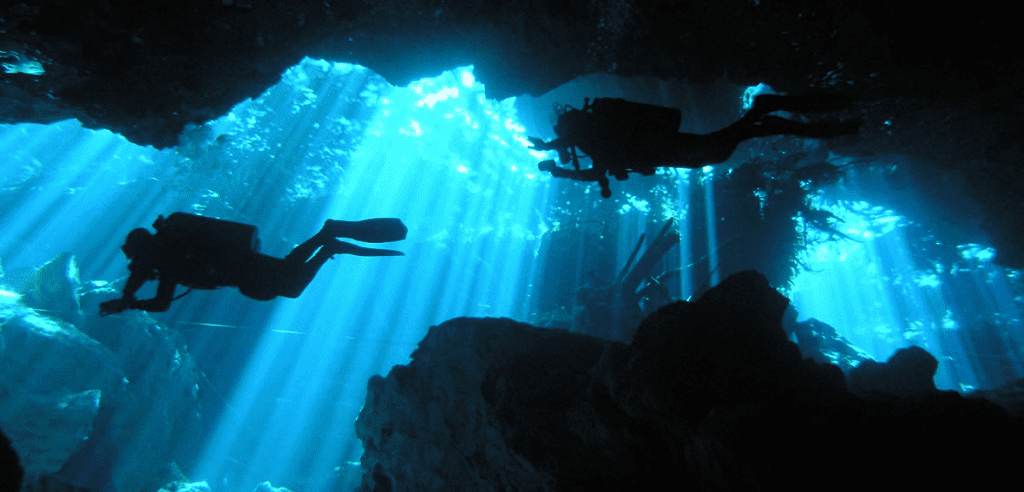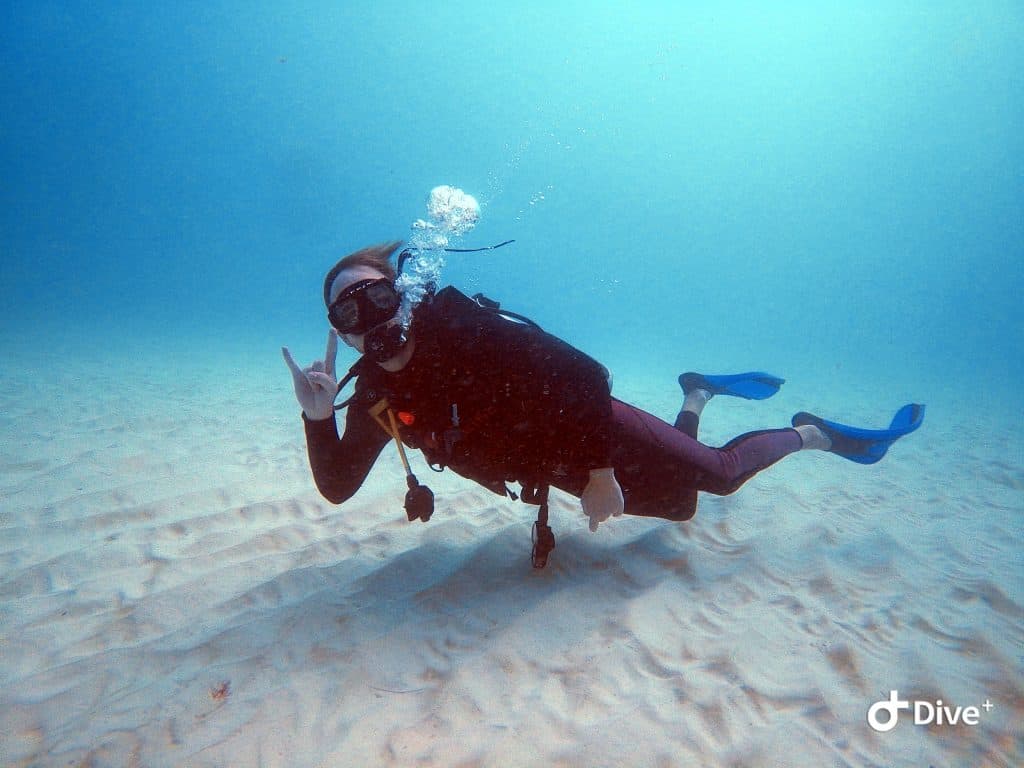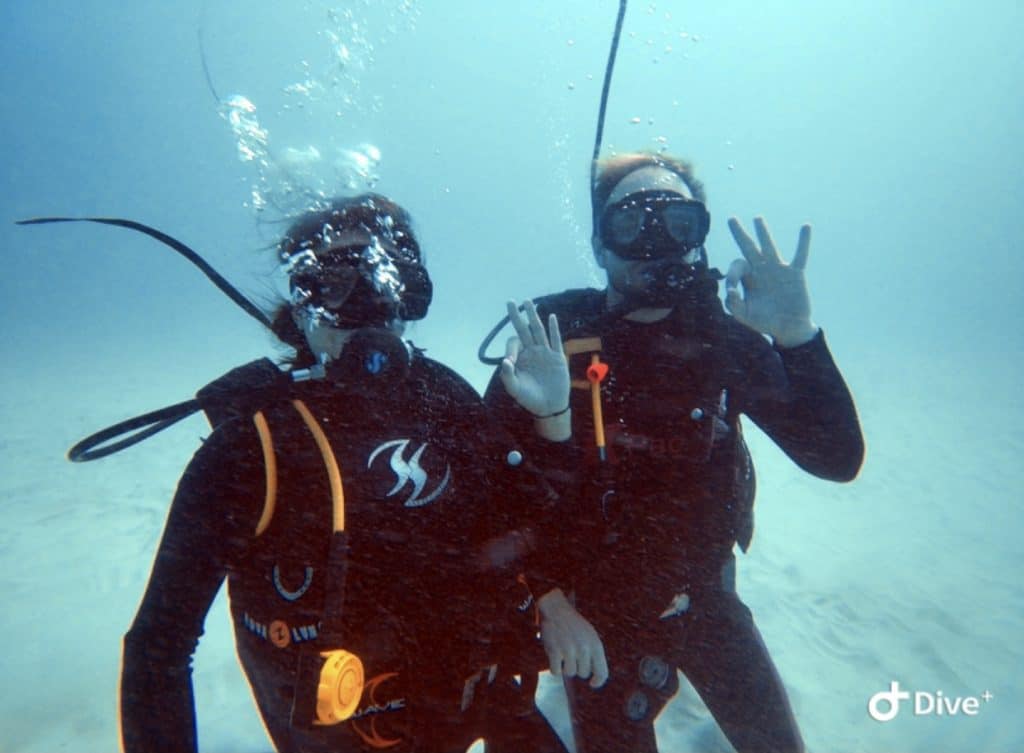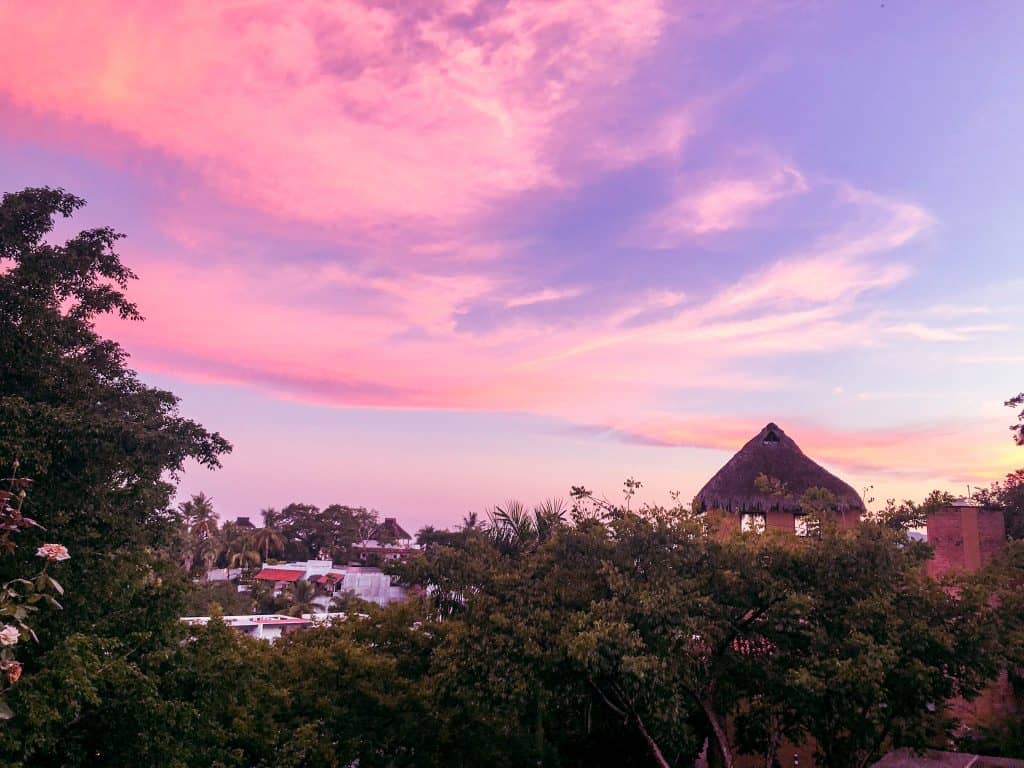The first-ever photo of planet Earth as a whole, taken from the Apollo 17 spacecraft is known as the ‘Blue Marble’. With three-fourths of the world covered in water, the name of the famous photograph is apt. The physics of life underwater are so tremendously different, that an incredibly different scene compared to our normal view on land can be found. My partner C.T. says it is like uncovering a whole new world, one that many of us land-dwellers never discover.
And I couldn’t agree more with her. On a trip to Thailand at the end of 2019, C.T. captured my fascination with the underwater world. On a snorkeling escapade around the Ko Phi Phi islands, we saw the unparalleled beauty of Maya Bay. That particular trip peaked with the chance to follow around sea turtles and their symbiotic fish, eating at the corral. The turtles didn’t mind us for a moment.
Meeting our Scuba Fix in Mexico
When in November (2020), C.T. & I made the snap decision to put all our belongings in storage and start our digital nomad adventure in Mexico, these memories of snorkeling in Thailand came back. Our desire to discover more of the subaquatic world could not be limited by simple snorkeling. So we set out to get our PADI Open Water Diver certification. The PADI certification is the most recognized in the world and the beginning of our journey into the scuba diving world.
So starting at the end of December in Puerta Vallarta, C.T. and I did our self-study with our diving manual before our first two days of pool training. We swiftly passed the requisite exams to get our referral, which allows us to complete our training in open water over in Playa del Carmen! Here we dove with the great folks over at Phantom Divers (thanks for the photos Polin!).
Once there, we completed our training in open seas accompanied by beautiful reefs, stingrays, and schools of fish swarming around. Our four dives were pleasant, but we still had to face our most anxiety-provoking challenge about diving: clearing a mask of water 30 ft. (or 10m) underwater. In the end, we managed just fine. And while we felt quite fatigued after our first couple dives, it’s only gotten better since!
Cozumel: Home to the World’s Most Loved Diving
After celebrating New Year’s with friends in Playa del Carmen, we had a short week on the island of Cozumel. The island provides direct access to stunning portions of the Mesoamerican Reef, which is the biggest reef in the Western Hemisphere and the second largest after Australia’s Great Barrier Reef.
On Cozumel, we met a friend of a friend of C.T. who took us diving in the Palancar & El Cedral reefs. These have been my favorite dives so far and literally pushed us to new limits. Our prior dives were about 30 – 40 feet deep, here we pushed down to a range of 60 – 75 feet (18 – 22m). Portions of the reef were so large that we could swim through them. During the El Cedral dive, we were suspended in a light current that took us along the reef. This truly provided the weightlessness of being an astronaut, marveling at the waters of the Blue Marble. This was topped off by sights of a turtle, a nurse shark, stingrays, lobsters, and many schools of fish.
Cozumel offers some of the best diving in the world but these days the island is rather desolate. Normally, Cozumel thrives off of Cruise Ship tourism, which for the last 10 months has been non-existent. As such, in every restaurant we went to, owners came to greet us personally to strike up a conversation. While diving would among the best we could find, finding accommodation on the island to meet our working needs was challenging.
Finding Calm in Puerto Morelos
Next up: the sleepy beach town of Puerto Morelos. Here we finally had the calm white beaches we’ve been looking for on our trip. After a solid week of work in our new AirBnB, including morning walks on the beach, we got ourselves ready for another weekend dive.

This time in the Cenotes with Nono from Happy Manta Diving, another referral through C.T.’s friend. Diving in these sinkholes in the earth is seeing the world at truly another level. With a ceiling above our heads, stalagmites along our sides, and Mayan artifacts found in niches in the cavern walls, this was something magical. Only made more beautiful by sunbeams piercing through the turquoise waters.

These days we’re in Merida, for a new chapter of our Digital Nomad stays in Mexico. The colonial city is the capital city of the state of Yucatan. Merida is considered to be among Mexico’s biggest cultural offerings with a variety of activities to do. Little surprise for a city of one million, surpassing the size of both Amsterdam and San Francisco. We’re looking forward to staying in one place for 4 weeks. We’ve found that the constant packing and unpacking, as well as looking for a place to stay is quite draining. More on Merida and beyond next time!





It is so rewarding to travel with you and Tiphanie. I truly enjoy it. With love.